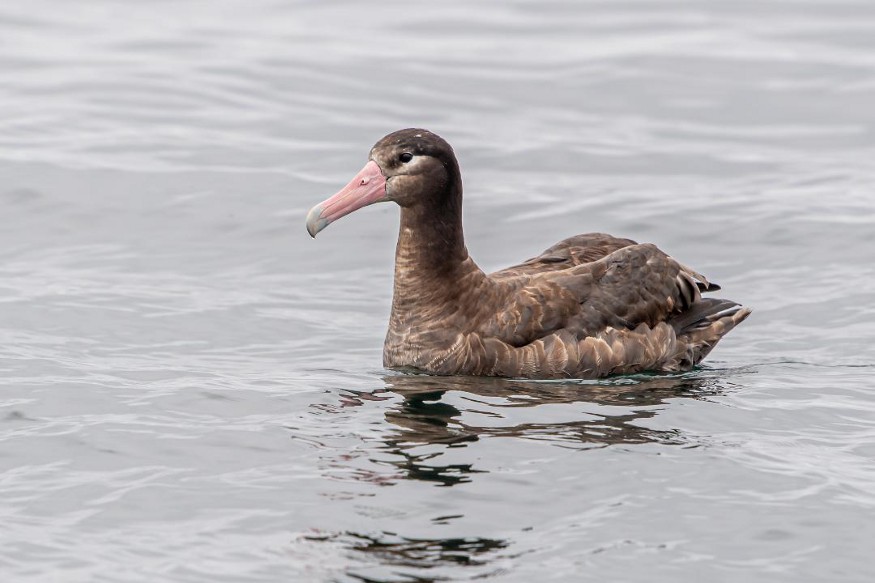
The juvenile Short-tailed Albatross seen of southern California
An online article in The Orange County Register dated 10 June 2021 describes the excitement when a juvenile Short-tailed Albatross Phoebastria albatrus (globally Vulnerable) was seem by avid birdwatchers off Los Angeles, California earlier this year. The reporter, Laylan Connelly, writes: "A rare albatross that breeds on islands off Japan and hasn’t been documented near local waters for more than 40 years was spotted just a few miles from shore over the weekend, thrilling bird enthusiasts and experts who hope the sighting is a good sign for the endangered species.”
The article continues: “Diane Alps, a naturalist for the Cabrillo Marine Aquarium in San Pedro who typically studies whale species off the California coast, was first alerted to the unusual sighting three miles south of the Port of Los Angeles on Saturday [5 June] by a commercial fisherman who sent photos and video of the bird. Similar laysan albatross and black-footed albatross are not uncommon sights locally, but the short-tailed albatross, known for its bubble gum-pink bill, is a rare sight. And this bird had a pink bill. Alps was able to charter a boat Sunday morning [6 June] and within 10 minutes sold the nearly 30 spots for an expedition to search for the bird – but finding it took a bit of ocean knowledge, and some luck.”

The juvenile Short-tailed Albatross shows its damaged wing
Photographs by Diane Alps
"They went to a known fishing ground that was downwind from where it was seen a day before and looked for gull flocks feeding in the same area. The Short-tailed Albatross wasn’t hard to spot among the other birds searching for food. The young bird, which carried a metal band on its right leg, “had one wing that looked weathered, possibly injured from an entanglement. The right wing was heavily beat up, but the left was pristine.”
The article states that the “last known sighting in local waters was in 1977, far offshore west of San Clemente Island. Prior to that was the early 1900s, records show. The other sightings are typically off central and northern California.”
A call has gone out from the U.S. Fish and Wildlife Service to "pelagic" bird watchers not to disturb the albatross by too close an approach or by chumming (using fish or fish oil as an attractant): "short-tailed albatross are a federally protected species under the Endangered Species Act, and any form of harassment or disturbance is a violation of federal law" (click here).

Not to be disturbed; photograph by Brad Lewis
John Cooper, ACAP Information Officer, 27 September 2021

 English
English  Français
Français  Español
Español